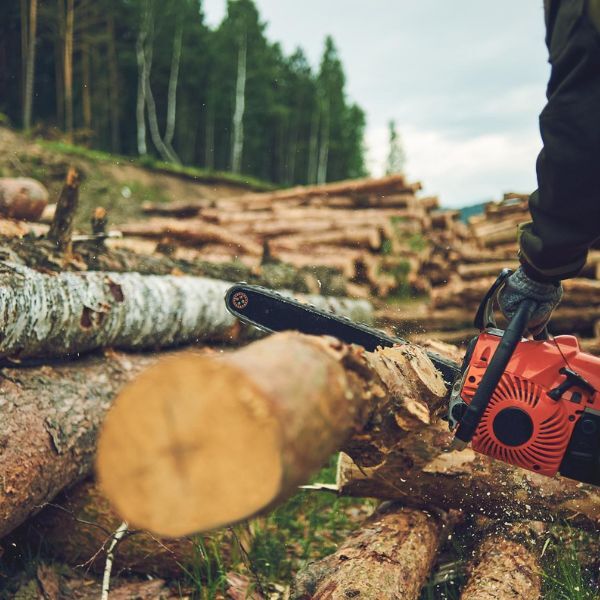Electric chainsaws are growing in popularity. In fact, the sales of electric chainsaws recently surpassed gas-powered chainsaws. There is a place for both types of chainsaws, but it’s wise to know the differences in operation and maintenance between gas and electric models. Here’s a quick look to get you up to speed on the pros and cons of each type.
Characteristics of electric motors
Whether it’s a car, lawnmower or chainsaw, all electric motors have one thing in common. They produce a significant amount of torque instantly. People who drive electric cars talk about jackrabbit starts from a stopped position. The same is true for chainsaws. The start is instantaneous without any lag.
How chainsaws work
The ideal way chainsaws get the job done is to let the weight of the saw do the work as the chain cuts through wood. This means that ideally you won’t need to use any downward force with your arms. Of course, this works best when the chain is sharp. If the chain is not as sharp as it could be, workers tend to start putting pressure on the saw to keep the cutting action going. For all practical purposes, workers will find themselves using downward pressure at times.
How gas and electric motors react to resistance
When resistance occurs as the chain cuts the wood, gas and electric motors act differently. If the chain is not cutting with complete efficiency, workers often find themselves putting downward pressure on the saw, but this action increases resistance for the chain. If the resistance becomes too much for a gas-powered saw, the motor becomes stressed and may even stall. Resistance is hard on gas-powered motors and can eventually lead to failure. For electric saws, however, downward pressure and increased resistance don’t matter because the motor will increase output without any harm to itself. Downward pressure and resistance will seldom lead to an electric chainsaw stalling.
Upkeep for gas and electric chainsaws
In summary, resistance is hard on the motors of gas-powered saws, but not so much for electric saws. For electric saws, resistance is harder on the chain, bar and sprockets. With a gas-powered chainsaw, you may find yourself rebuilding the motor, but with an electric saw, you’ll find yourself replacing the chain, bar and nose sprocket more often.
Bottomline on gas and electric chainsaws
Knowing the pros and cons of gas and electric chainsaws will help you make a better decision when it comes to finding the one that is best for your workstyle. Both types of saws have their advantages and disadvantages, and both types of saws have a place in tree care and timber harvesting.
Return to the Buying Guide main page.

